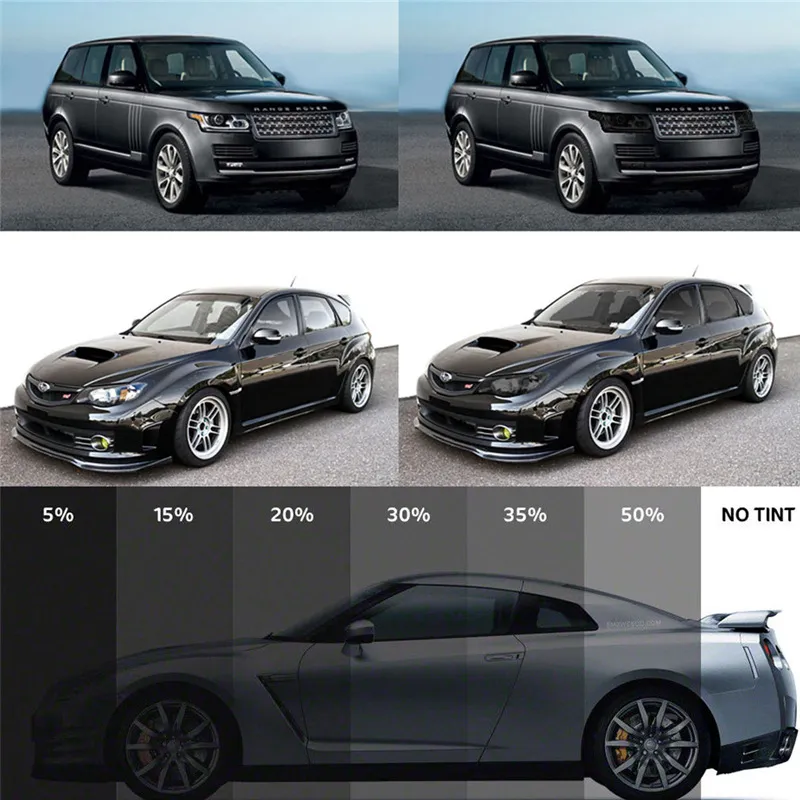Professional Window Tinting Services for Better Comfort and Style in Your Vehicle
Professional Window Tinting Services for Better Comfort and Style in Your Vehicle
Blog Article
Home Window Tinting Laws: What You Required to Know Prior To Tinting Your Automobile
Understanding window tinting laws is essential for any lorry proprietor taking into consideration tinting their automobile. Rules differ significantly from one state to another, establishing certain limitations for Visible Light Transmission (VLT) portions, especially for front-side windows and windscreens. Failing to comply with these legislations can result in fines, the requirement to remove the tint, and issues with insurance. As you consider improving your lorry's look and functionality, it is crucial to grasp not only the lawful effects but additionally the sensible factors to consider that feature choosing the best color. What elements should you focus on in your decision-making procedure?
Significance of Recognizing Tint Laws
Comprehending home window tinting laws is important for vehicle proprietors to make certain compliance with state policies. These regulations dictate the allowable degrees of color darkness and reflectivity, which can considerably vary from one territory to one more. Falling short to abide by these policies can result in fines, mandatory elimination of the color, and prospective difficulties during car evaluations.
Furthermore, understanding these laws assists car proprietors make notified decisions regarding their tinting choices. Different sorts of home window movies provide different benefits, such as UV defense, heat denial, and glare decrease. Without knowledge of the legal restrictions, vehicle owners run the risk of picking products that might ultimately lead to legal issues.
Additionally, understanding of tinting regulations fosters a more secure driving environment. window tinting. Exceedingly dark colors can hinder presence, increasing the danger of accidents, particularly in the evening or in unfavorable climate condition. Regulation enforcement companies also use these regulations to ensure roadway security, making compliance not simply a personal obligation yet a lawful obligation
State-Specific Color Regulations
Each state in the U.S. has developed its very own specific regulations pertaining to home window tinting, showing a varied range of requirements and requirements. These guidelines can differ significantly, affecting just how lorry proprietors approach installment and compliance. For example, some states permit darker tints on rear home windows while enforcing stringent limits on front-side windows.
In addition, policies commonly specify allowed tint products and shades. Particular states restrict reflective tints entirely, while others may enable them to a limited level. Some territories mandate that automobiles with colored home windows show a sticker label indicating conformity with state laws, giving a clear recognition for legislation enforcement.
Enforcement of these legislations also varies; some states are extra positive, performing random checks, while others depend on issues or noticeable infractions to start enforcement. Lorry proprietors must realize that failure to conform with state-specific tint laws can result in fines, mandatory removal of illegal colors, or both.

Lawful Color Percentages
Determining the lawful color percentages is crucial for lorry proprietors seeking to follow state regulations. Each state has certain regulations governing just how much light has to go through the home windows of a car, which is expressed as a percent called Visible Light Transmission (VLT) This percentage differs dramatically across states and can depend on the type of window-- front side, rear side, and windshield.
As an example, some states permit as low as 20% VLT on front side windows, while others might permit approximately 50%. Windscreen tinting is commonly more limited, with lots of territories permitting only a slim band of tint on top of the windshield. On the other hand, rear windows commonly have a lot more forgiving guidelines, with some states allowing darker tints.
It is essential for car proprietors to familiarize themselves with their regional legislations to avoid potential legal concerns. This consists of understanding how VLT is gauged, as it can differ based on the sort of home window film used. Remaining informed about these guidelines ensures conformity and advertises secure driving problems for both the vehicle proprietor and others when driving.
Repercussions of Non-Compliance
Failing to stick to home window tinting legislations can lead to substantial repercussions for lorry owners. Policemans educated to determine unlawful color degrees might provide penalties, which can vary by jurisdiction but frequently range from moderate to substantial quantities.

Insurer might additionally penalize for non-compliance, as unlawful alterations can be more considered as a violation of plan terms. This might impact coverage rates or lead to difficulties in claims if an event occurs.
Inevitably, the effects of non-compliance prolong past instant punitive damages; they can influence a motorist's insurance rates, lawful standing, and overall car value, emphasizing the value of sticking to neighborhood window tinting regulations.
Tips for Choosing Tinting Options
Comprehending the ramifications of non-compliance highlights the value of making educated choices when picking window tinting choices. Acquaint on your own with your state's particular regulations regarding tint darkness and reflectivity. Each state has special policies that determine the acceptable limitations, so ensure you remain within these guidelines to prevent charges.
Secondly, consider the sort of color material. Choices include colored, metalized, and ceramic tints, each offering differing degrees of warmth being rejected, UV security, and toughness. Ceramic tints supply superior heat resistance without conflicting with digital devices, making them a preferred selection.
In addition, examine your primary function for tinting. If you seek boosted privacy, choose for darker tints; however, remember that this may influence presence in the evening. On the other hand, if glow reduction and UV defense are your primary problems, lighter tints might be enough.
Lastly, speak with a specialist installer who is well-informed regarding neighborhood regulations and can recommend high-grade materials matched to your requirements (window tinting). Taking these variables into account will guarantee you make a knowledgeable decision, inevitably improving both your car's looks and performance
Final Thought
To conclude, experience with home window tinting legislations is important before applying tint to a vehicle. Each state imposes details policies concerning noticeable light transmission percents, especially for front-side home windows and windscreens. Non-compliance can result in substantial penalties, consisting of click this link fines and necessary removal of non-conforming tint. By understanding legal needs and picking suitable color products, automobile proprietors can accomplish aesthetic enhancement while remaining certified with pertinent regulations. Adherence to these guidelines ensures both safety and security and satisfaction.
Understanding window tinting legislations is necessary for any type of vehicle owner taking into consideration tinting their cars and truck.Understanding home window tinting regulations is critical for vehicle owners to ensure conformity with state laws. Some states enable darker colors on rear home windows while enforcing rigorous limits on front-side windows.
In contrast, back windows normally have a lot more lax guidelines, with some states allowing darker colors. (window tinting)
In verdict, knowledge with home you could try these out window tinting regulations is necessary prior to using color to a vehicle.
Report this page